
General View
Once the project is created, the main screen will be seen like this.
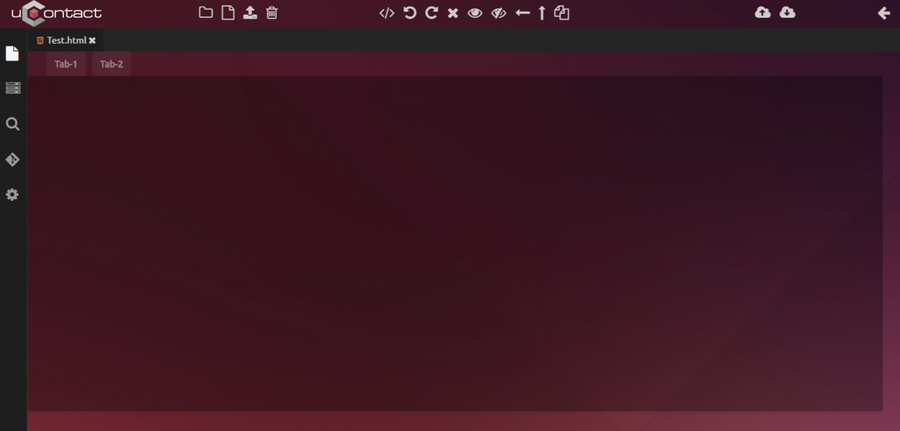
General Menu
On the left of screen can see the general menu that divides in five parts:
 Actual Project
Actual Project
Shows the files that the user opened, which ones can be closed by clicking the cross next to it.
Apart from that, all the files that have the opened project will appear listed.
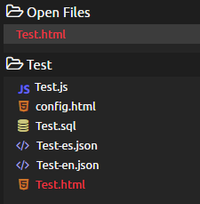
 Controlers
Controlers
Contains all elements that are going to be used in the creation of the new project, for example Buttons, Labels, CheckBox,etc.
This ones are insterted using Drag&Drop, which facilitates the use of the Form Designer to the user. Simply drag one element to the container to the drawing section, and when droped, it will automatically be instaled.
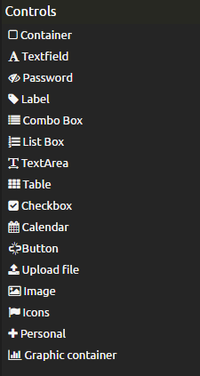
 Search
Search
On the top part of this section, the user can make searches on every project file. When the user clicks on one, automatically is taken where the result is.

Search Example:

The word searched is highlighted in the js file for a better visualisation.
 Projects
Projects
The user has a history with all the changes made in the form, when the user clicks on one of them, the change made will appear as a before and after. Next to every change listed there will be an arrow that undones the change.

 Configuration
Configuration
Controls the letter size and screen style when visualising the files code.
Files
On the top left of the screen we can see the following buttons:

From left to right:
- New Project
- New File
- Upload File
- Delete
Synchronise
On the top right sector of the screen we can see the following buttons:

From left to right:
- Deploy: Saves the file changes.
- Download: Downloads the last saved change made on the project.
Tools
When opening the main .html file of our project, on the top margin of the screen will appear the following buttons:

From left to right:
- Change View: From design to code or vice versa.
- Undo Changes
- Redo Changes
- Delete Element: Deletes the selected element.
- Show Hidden
- Hide Hidden
- Align Left: This will align the selected element to the one that is far on the left.
- Align Top: Same as left but will align to the far element on the top.
- Copy elements
Controls
Controls Menu
This menu contains a list with all the controllers or elements that will be used on the creations of the form.

To be able to use on the forms you must click on the desired controller and drag it to the container where we want to put it.
When the controls are on the work area, this ones can be selected to see their properties, adjust its size using Drag&Drop and move them around.
The user can select more than one control by clicking on them and move them around as a group. To deselect this ones, just click again.
Properties Menu
You can open the properties menu by double clicking an element or by having one selected and clicking the arrow on the top right corner of the screen.
On this menu we can modify the properties or attributes of the selected element like its identifier, vertical or horizontal position, height and width and many more.
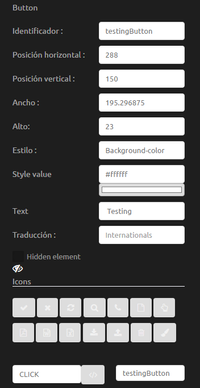
Note: The controlers that have the option of adding an event, for it to redirect the user to the code using the button  , the box next to it must be filled with an existing function located in the file PROJECTNAME.js
, the box next to it must be filled with an existing function located in the file PROJECTNAME.js
Uses of the Controls
Container
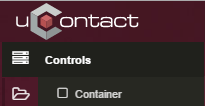
The container control are a few boxes or rectangular spaces. On it we can insert HTML content. Its main utility is visual, by allowing to organise and to give a structure and design to the form.
By default the html already has a container. If we want to use more than one container we need to delete or reduce the existing container because one container can not be on another.
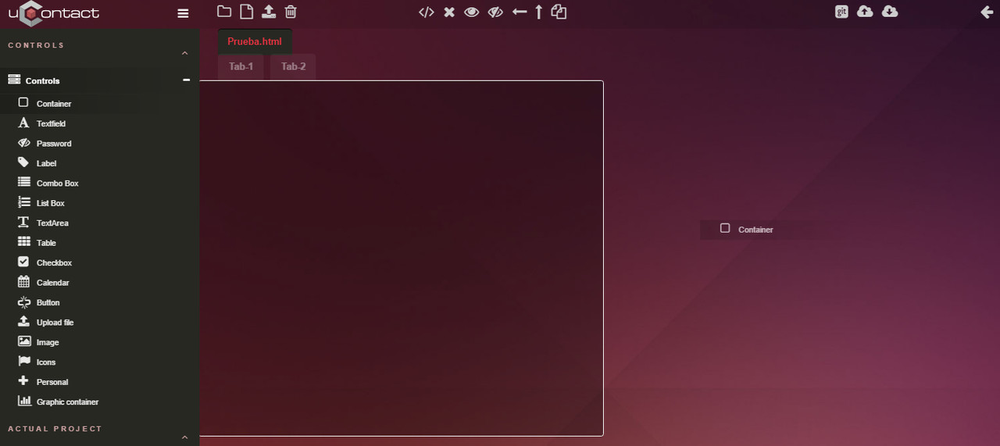
The result of dropping the container.
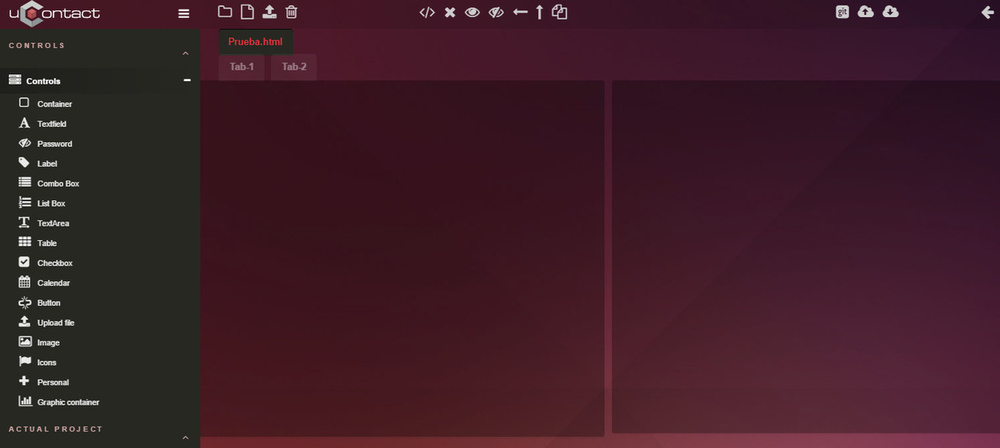
Text field

Whether his driver is a text box,
If we double click it we can open the properties (or with the arrow on the top right corner), there we can give it an identifier, you can change position and size, add a placeholder, this adds a default word on the text field. You can also give a tabindex, this is an integer that indicates if the element can be focusable or not. A tooltip text that will pop-up a small text when hovering with the mouse. Besides on the properties we have a checkbox that makes the element hidden.
Other functionality in the properties is to add an event to the element. On the next image we can see the events that can be added to the element by always putting a reference name.
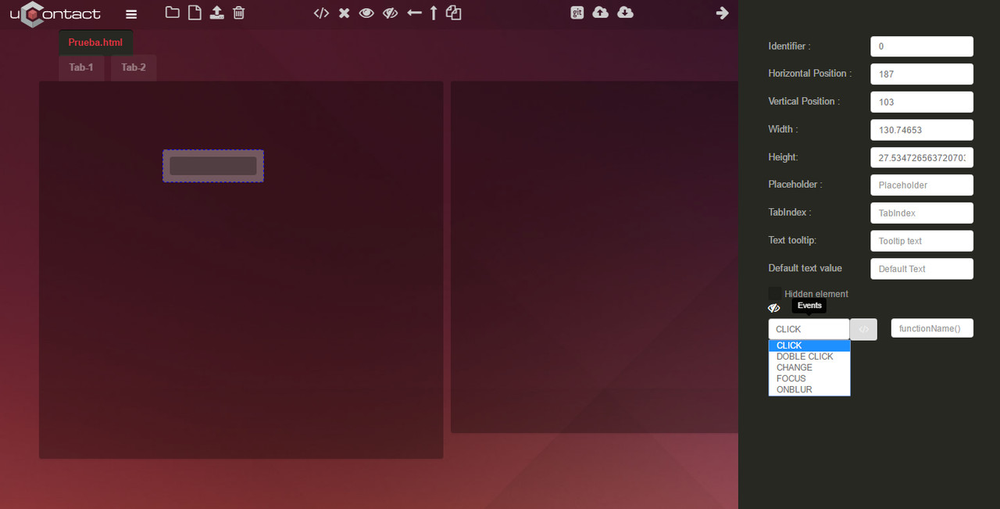
Password

The difference on the textfield is that this will use a password and so we want that, when the user is typing, he can see asterisks (*) instead of the real password.
Label

Represents an etiquette for an element on a user interface, on this case it will be used as a text.
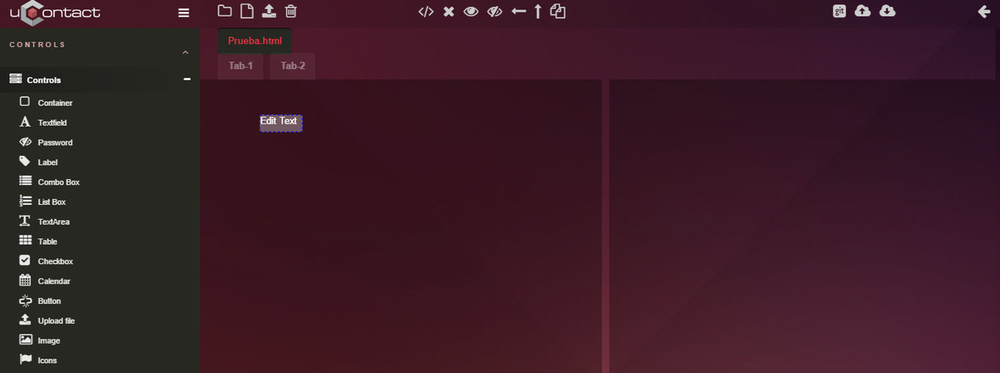
ComboBox

The next control is a list of options, it is used to show data on a deployable box.
On its properties it can be assigned an identifier, change positions and size. Besides we can hide the element using a checkbox.
Other functionality in the properties is to add an event to the element. On the next image we can see the events that can be added to the element by always putting a reference name.
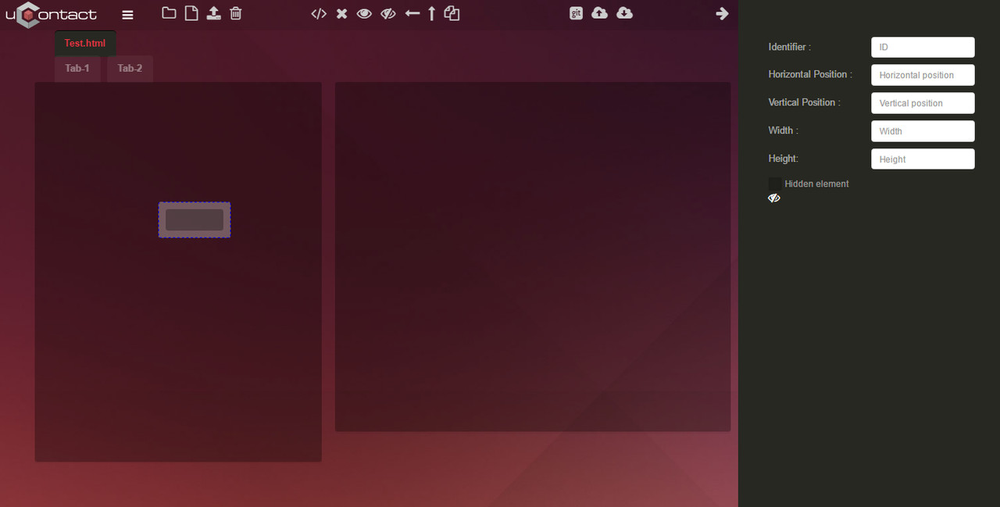
ListBox

The ListBox control allows the user to use one or more elements on a predefined table. The difference with the ComboBox is that it can show and allows to select several amount of elements.
On its properties it can be assigned an identifier, change positions and size. Besides we can hide the element using a checkbox.
Other functionality in the properties is to add an event to the element. On the next image we can see the events that can be added to the element by always putting a reference name.
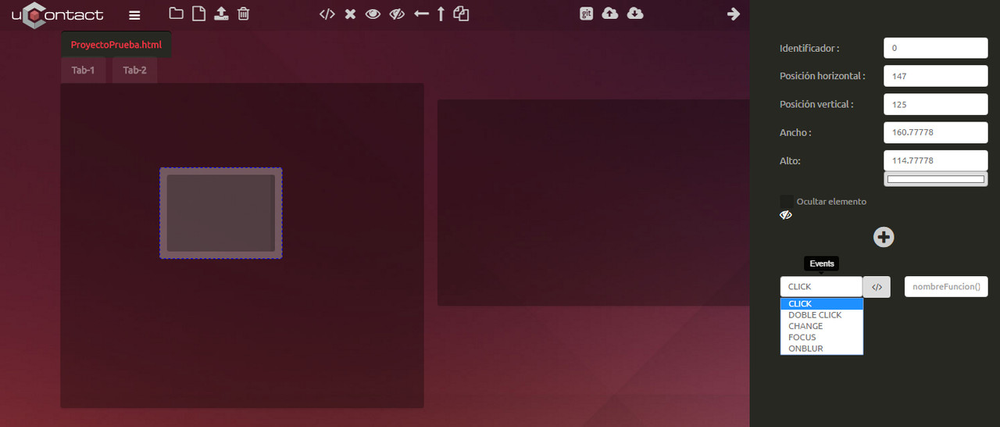
TextArea

This control defines a text with multiple lines on a text area. On its properties you can add an identifier, you can change positions or size, add a placeholder, this allows to put a default word on the text box. To give a tabindex, this is a number that makes the element focusable. You can also add a tooltip that appears as a pop-up when hovering with the mouse over the element. And you can make the element hidden with the hide element checkbox.
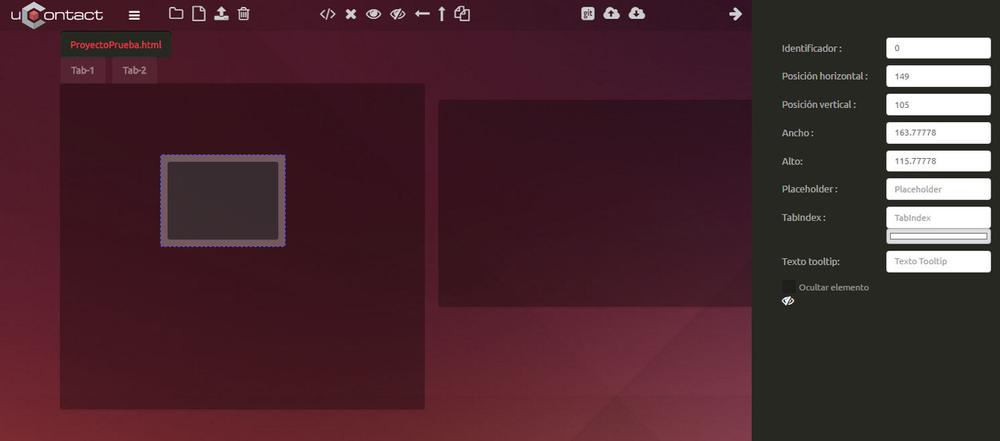
Table

This controller allows to create a table. On its properties you can add an identifier, you can change positions and size, besides you can make the element hidden by clicking the Hide element checkbox. On the bottom of the properties menu you can add columns to the table.
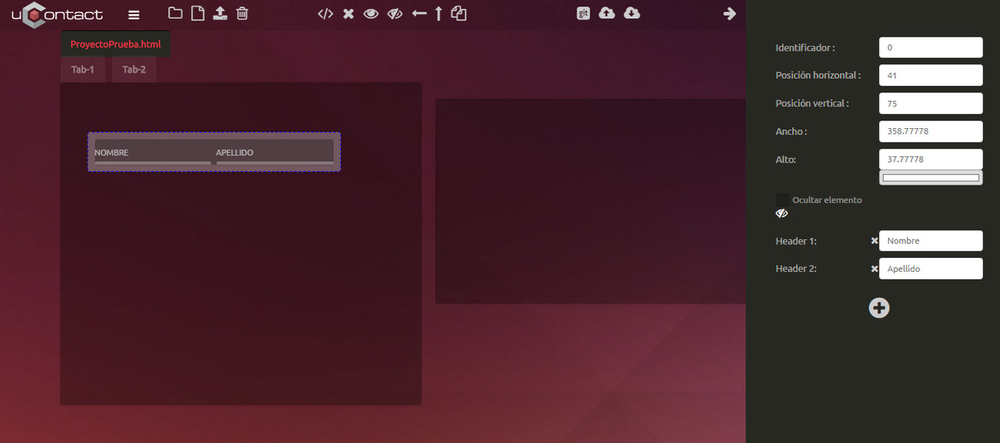
CheckBox

Indicates if a condition is enabled or disabled. Normally it is used to represent a Yes/No or True/False to the user. This controller will be checked as default. In case that wanting to uncheck the element it must be done by code view and modifying its properties.
In its properties you can add an identifier, change positions and size, you can add a default text and you can set the element as hidden by clicking on the checkbox.
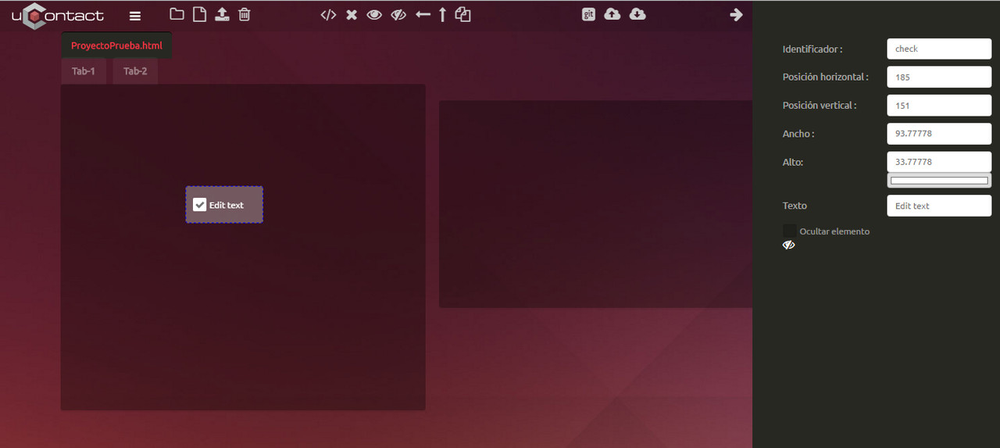
Calendar

This control will load the calendar type element.
On its properties you can add an identifier, change positions and size and to add a default text. Besides the checkbox allows to hide the element.

Button

This control will create a button.
On its properties you can add an identifier, change its position and size, you can change its style with a value (colour) and a default text. Besides we will have a checkbox to hide the element and an icon.
Other functionality of the property is to add an event. On the image we can see all the elements that can be added, always putting a reference name.

Upload file

Its functionality is to upload local files to the user when using the form.
On its properties you can add an identifier, change position and size, a placeholder to set a default word on the text box and to hide the element by using the checkbox.
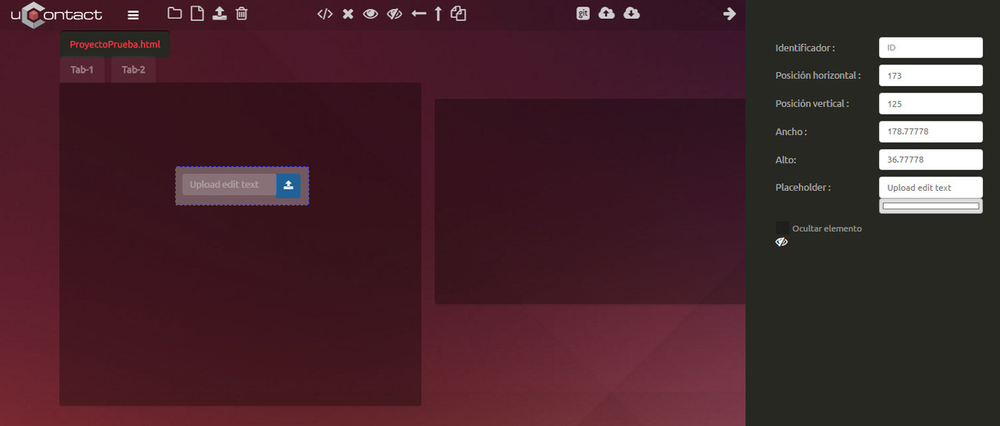
Image

This controller allows us to upload an image to the form.
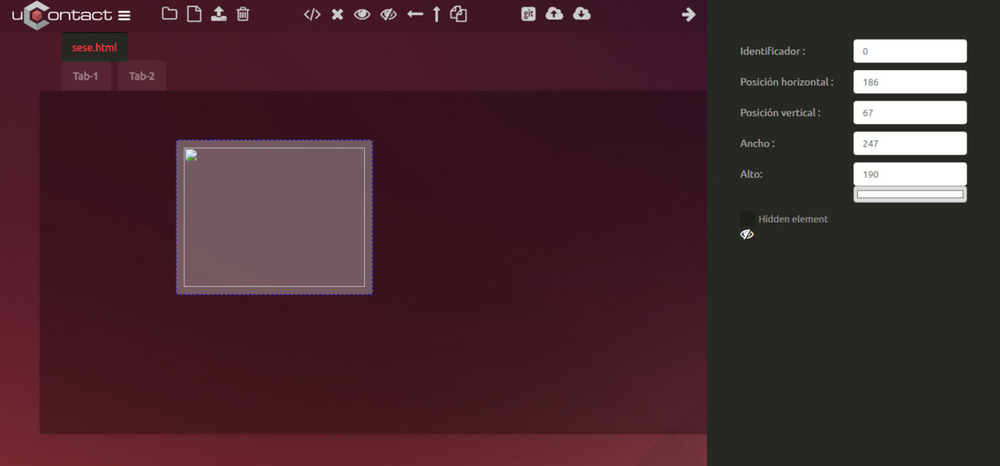
Icons

This controller allows us to upload an icon.

Personal

Graphic container

This container adds a div on the html to be able to create charts.
Actual Project
Show the project that is actually working with all the fields of the own project.

Note: The files that are red marked, are those ones that have changes made on but are not deployed.
Files created by defect in the new project
SQL
One .SQL default file is created, the role of this file is to be able to relate all you need the form of a database, form creating tables, Insert,etcJS
A .JS file is where the logic will form in the corresponding JavaScript language.Config.html
Another file that created us is config.html, it is responsible to relare all the configuration of the form, from plugins needed, JS, stylesheets,etc.HTML
We also create an HTML, which will form the interface.JSON
And finally a appcache file , two files with this extension will appear, which ones are used to Internationalise the Form. Apart from the English and Spanish ones, more can be created for different lenguages
Note: The only files that come with default content will .html and .json.
, the box next to it must be filled with an existing function located in the file PROJECTNAME.js
















